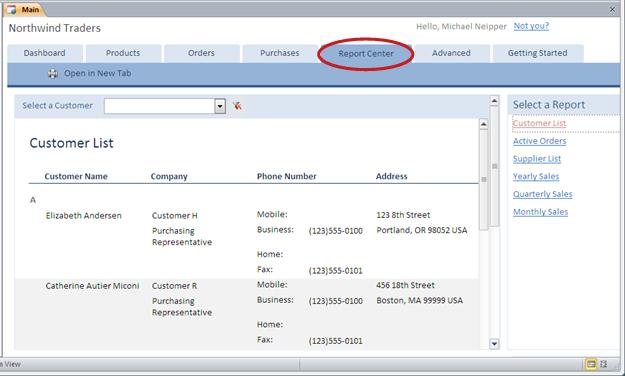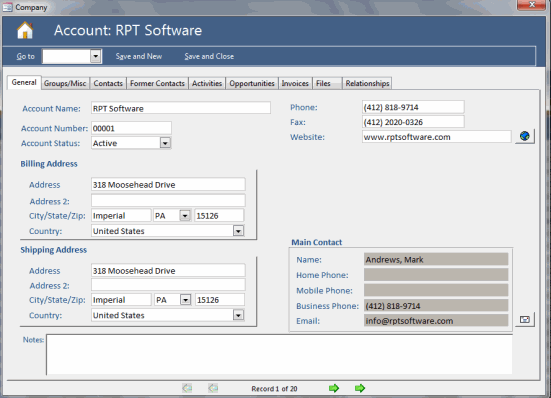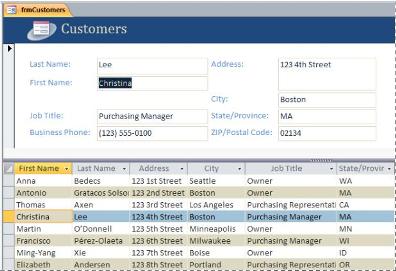

- Microsoft access product returns database template how to#
- Microsoft access product returns database template plus#
- Microsoft access product returns database template professional#
This is what’s known as a relational database, and Access makes such a database very easy to create.įirst, launch Access and choose File, New. The only duplicate data in this arrangement is the employee ID number, which serves to link the two lists.
Microsoft access product returns database template plus#
In a second table (another list), you’d enter the description and ID number for each device, plus the ID number for whichever employee is in possession of that item. In Access, you would create one table (a list) of employees, with each record containing the employee’s name and ID number. You might end up with what looks like two different employees, for instance, simply because someone entered a record for “Bill Smith” and someone else created a second record for the same person as “Billy Smith.”įor such scenarios, Access is a vastly superior tool to Excel. And because the spreadsheet would be cumbersome to work with, there’s a chance that over time you or a colleague would enter some employee data incorrectly. That means you would be repetitively entering the employee data, and you would end up with a lot of duplicate data stored in the Excel file. In this case, you would need to repeat each employee’s name and employee number for each device in their possession.

The other way to arrange the data in Excel is to allocate one row in the worksheet to each electronic device, but this setup is just as cumbersome, albeit for different reasons. It also wouldn’t be easy to view the data if someone had a lot of equipment, as you would have to set up more columns than would fit comfortably in the Excel window.

Because the amount of data stored for each employee would vary, looking for a particular item in the worksheet wouldn’t be easy. If one person had only one piece, then you’d need just two columns. If one person had 15 devices, for example, you’d make 30 such columns. First, you could allocate one row in a worksheet for each employee and dedicate pairs of columns across that row to contain the description and ID for each asset the employee has been assigned. If you were to create this record-keeping system as a list in Excel, you would do so in one of two ways. Each employee may have any number of these assets in their possession, and you need to store a description and an ID number for each electronic device an employee has (you needn’t limit your data to electronic devices, of course). Here’s a real-world situation involving complex data that is a good candidate for being stored and managed in Access rather than in Excel: Let’s say your business needs to maintain records as to which employees have been assigned company assets, such as smartphones, computers, tablets, or video projectors. What’s more, storing data in list form requires you to use special Excel tools, such as pivot tables, so that you can analyze and view the data in a meaningful way. Although you could store even complex data in list form in Excel, doing so typically results in a lot of data duplication and the risk of data-entry errors. When you’re working with complex data, however, Access is the program to use. When you’re working with simple lists, you have no reason to use Access, because Excel offers basic tools for such tasks as sorting, filtering, and computing values.
Microsoft access product returns database template how to#
I’ll show you how to make the most of this relational database program.

Microsoft access product returns database template professional#
If you own a version of Microsoft Office that includes Access (Office Professional 2010 is the most current version), but you’ve never used it, you’re overlooking a powerful tool for organizing and analyzing business data.


 0 kommentar(er)
0 kommentar(er)
